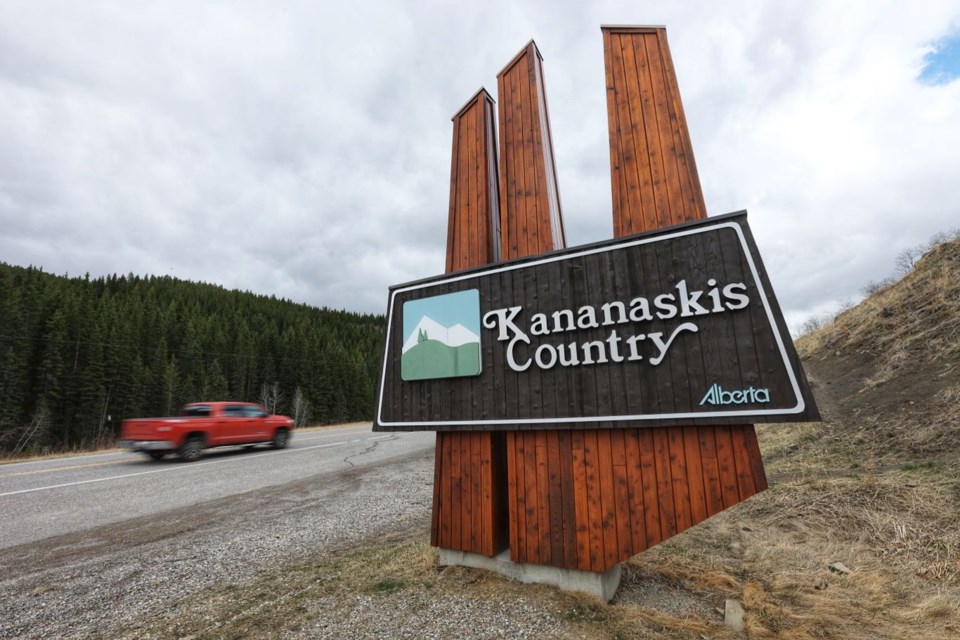KANANASKIS— Rescuers are on track for their busiest year ever in K-Country, after experiencing their most strenuous year to date in 2020.
From 2019 to 2020 calls were up 40 per cent by the end of the year, and this year they are on target to surpass that record, said Alberta Environment and Parks Kananaskis Public Safety Specialist Darren Vonk.
The popular provincial park had an estimated 5.4 million visitors during 2020, an all-time high, according to visitation numbers provided by Alberta Environment and Parks. This increase in visitors were matched by a sharp rise in rescues.
The summer of 2021 is shaping up to be the most active year to date in the Kananaskis region. Kananaskis Public Safety has a team of five public safety specialists with 12 conservation officers who assist in rescues.
“We’re definitely stressed for staff but we’re managing out there,” Vonk said. “We’re working full big long days and that doesn’t slow down until September or October when the seasons really change.”
He expects to see these trends of busy weekends continue growing each year.
“The word is out. Hiking has become vogue in recent years.”
On the weekend of June 26, the team responded to 21 calls over two days related to horse riding accidents, people getting caught in the Bow and Elbow Rivers, quading and dirt biking accidents in McLean Creek, mountain biking accidents, hikers experiencing heatstroke and other precarious situations.
Heatstroke proved to be a major issue during the hot spell, Vonk said, seeming to stem from people hiking in temperatures over 30 C with minimal water. One group even saw a dog die from heatstroke near Canmore.
“There was never a quiet moment on that weekend,” Vonk said.
Vonk said rescue calls are largely up because the Kananaskis area has seen a sharp increase in popularity during the COVID-19 pandemic. He added the recently introduced Kananaskis Conservation Pass does not appear to have had an impact on the number of people visiting the park.
“We haven’t seen a decrease in visitation due to the pass,” Vonk said. “It is bumper-to-bumper cars at all of the popular locations and new spots seem to be showing up every week.”
Vonk said certain spots in K-Country produce more incidents including Yamnuska Mountain, which is closed this summer, the east end of Rundle Mountain and Prairie Mountain located near Elbow Falls.
“Everybody has found the outdoors, which is amazing, but … A lot of people are heading out there to do these hikes and scrambles and they just don’t have that background or experience and they’re going for big objectives and they’re getting into hot water really quickly,” Vonk said.
The three biggest calls they receive are hiking, rafting or mountain bike-related. This trend has been taking place for the last three years.
Vonk said the major factors that contribute to incidents have been hikers wearing inappropriate footwear when they head out on the trails.
“That’s the number one contributing factor to people twisting their ankles, rolling their ankles and that in turn slows them down on their descent or completely immobilizes them,” Vonk said. “That turns into an overdue call or a back country evacuation because they can longer proceed.”
Overdue calls, when a hiker fails to return by a certain time, are also situations they often respond to.
“People can underestimate how long a certain objective is going to take or they don’t account for a lot of the places in the park not having cell service,” Vonk said.
The best way to support Public Safety and keep safe is planning ahead before heading out on trips, Vonk said.
Rescuers are reminding people to have appropriate and necessary tools on every hike, including some type of flashlight, appropriate clothing based on the weather, sunscreen, water, a map or GPS and a compass.
“It all wraps around planning— You have to be able to take care of yourself until we arrive,” Vonk said.




